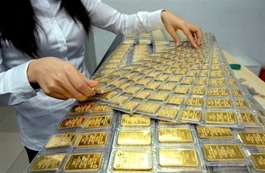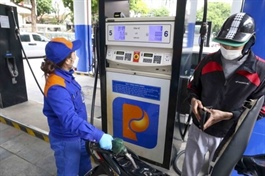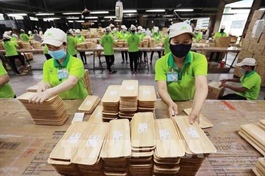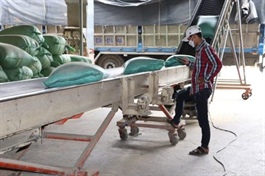Global gold demand hits record highs, supporting rising prices in Q2
Global gold demand hits record highs, supporting rising prices in Q2
Gold bar and coin demand in Việt Nam in the second quarter of this year (Q2) jumped 30 per cent year-on-year to 12 tonnes, the World Gold Council’s Q2 2024 Gold Demand Trends report has revealed.
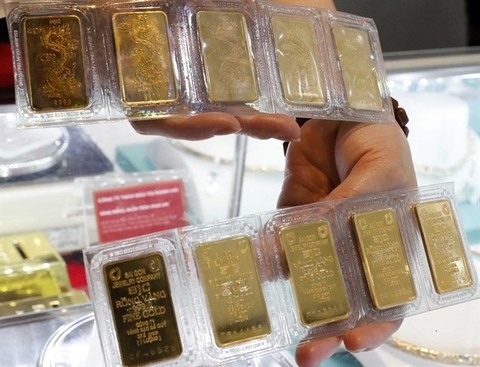
Bảo Tín Minh Châu gold bars are displayed for sale in Hà Nội. — VNA/VNS Photo Trần Việt |
The country's total demand for gold bars and coins was 26 tonnes in the first half of this year, the highest level since 2014.
Gold bar and coin demand in Việt Nam saw investors continuing to seek refuge in gold to combat rising inflation, a weaker local currency and the poor performance of the local equity and real estate markets, the report noted.
According to the data, the global gold demand increased 4 per cent year-on-year to 1,258 tonnes in Q2. The demand was supported by healthy over-the-counter (OTC) transactions, up a notable 53 per cent year-on-year at 329 tonnes.
Increased OTC demand, continued buying from central banks and a slowdown in ETF outflows drove record-high gold prices in Q2. The gold price averaged US$2,338 per ounce, 18 per cent higher year-on-year, reaching a record of $2,427 per ounce, during the quarter.
Central banks and official institutions increased global gold holdings by 183 tonnes, slowing down from the previous quarter but still reflecting a six per cent increase year-on-year,
Shaokai Fan, Head of Asia-Pacific (ex-China) & Global Head of Central Banks at the World Gold Council, said: “Global gold investment remained resilient, marginally higher year-on-year at 254 tonnes, concealing divergent demand trends."
He said that demand among the ASEAN countries that was monitored individually in the report remained positive. All saw year-on-year gains, fuelled in part by currency depreciation.
Meanwhile, record prices curbed gold jewellery volumes in markets across the globe, with global gold demand down 19 per cent year-on-year in Q2. Việt Nam and Indonesia saw weaker demand in Q2, with Thailand bucking the trend despite the record gold price.
Vietnamese gold jewellery demand in Q2 fell 15 per cent year-on-year to three tonnes primarily due to price, although slowing GDP growth also impacted sentiment. Its first-half demand sank to just above seven tonnes, the lowest first-half total since 2020.
Global gold ETFs saw minor outflows of seven tonnes during the quarter. Asian growth continued, sizable European outflows in April turned into nascent inflows in May and June and North American outflows slowed significantly compared to the previous quarter.
In addition, demand for gold in technology continued to increase, jumping 11 per cent year-on-year driven primarily by the AI boom in the electronics sector which saw an increase of 14 per cent year-on-year.
At the same time, total gold supply rose four per cent year-on-year, with mine production increasing to 929 tonnes. Recycled gold volumes increased four per cent compared to the same quarter in 2023, marking the highest second quarter since 2012.
Louise Street, Senior Markets Analyst at the World Gold Council, said that while there are potential headwinds for gold ahead, there are also changes taking place in the global market that should support and elevate gold demand.







